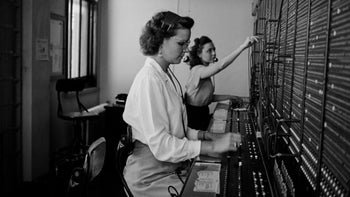Thanks to the smartphone era, dialing "0" and "411" means nothing on AT&T's digital service

Want to feel old? Tell your grandchildren (or children if you're young) that you used to use telephones that were connected by a wire to a jack in the wall. Tell them that you couldn't put your phone in a pants pocket and bring it wherever you went. And you might even tell them that these phones didn't have a screen and (horrors of horrors) there was no TikTok! And if you needed to get someone's phone number, you couldn't Google it or scroll through your contacts list.
To get a phone number back in the day, you used to have to dial 411 and speak with an operator. But AT&T (via CNN) released a statement stating that starting at the beginning of this year, operator assistance and directory assistance are no longer available to customers dialing "0" and "411" respectively using an AT&T Phone (formerly U-verse Voice) on a digital landline.
AT&T ends 411 service for its digital phone service
Other companies offering digital phone service, such as Verizon and T-Mobile, continue to offer these services for a fee. However, those of us old enough to remember the old days of wired home landline phone service always remember that AT&T at one time had a monopoly on this service and provided the operators for directory assistance.


In its press release, AT&T wrote, "If you dial "0", "00", 411, NPA+555-1212, or 555-1212 on or after January 1, 2023, you may receive a message letting you know that Operator and Directory Assistance can't be accessed."
Interestingly, AT&T is telling its customers that phone numbers can be looked up by turning to websites or apps from online services like Google, Bing, or Yahoo. Another suggestion made by AT&T is to use phone directory search engines such as therealyellowpages.com and 411.com. An AT&T spokesman said, "Nearly all of these customers have internet access to look up this information."
But that wasn't the case 100 years ago when the telephone operator was the person who connected calls, and passed along information. "The operator was the internet before the internet. There’s a wonderful circularity there," said Josh Lauer, an associate professor of media studies at the University of New Hampshire. Throughout the 20th century, AT&T offered information to callers such as sports scores, weather forecasts, time and date, election results, and bus schedules. Doesn't it sound like Google?
"Information" was renamed "directory assistance" in 1968
In her 2019 book about the history of telephone operators, Emma Goodmann said about operators, "Telephone users interpreted her as an efficient way to locate any information." In those days, operators would be asked questions like how to get a squirrel out of the house. In 1968, AT&T changed the name of the service from "information" to "directory assistance."
In an ad AT&T ran in 1968, the company explained why it made the name change: "When she was called 'information,' people kept calling her for the wrong reasons. Now we call her 'directory assistance' in the hope that you’ll call her only for numbers you can’t find in the phone book." The number of operators in the system peaked at 420,000 in the 1970s. By 2021, that figure was down to less than 4,000.
The development of the automated switchboard was the beginning of the end for operators since they no longer had to make long-distance connections. Still, even in the smartphone age people call 411. In a 2019 report, the FCC stated, "411 usage is not insignificant," and estimated that 71 million calls annually were placed to 411. But even those whose livelihood depend on 411 know that the writing is on the wall-and has been since the start of the smartphone era.
David McGarty, the president of US Directory Assistance, says that calls to operators have declined 3% a year and by 90% since he started in 1996. McGarty says, "We’re content with riding the Titanic down."










Things that are NOT allowed: